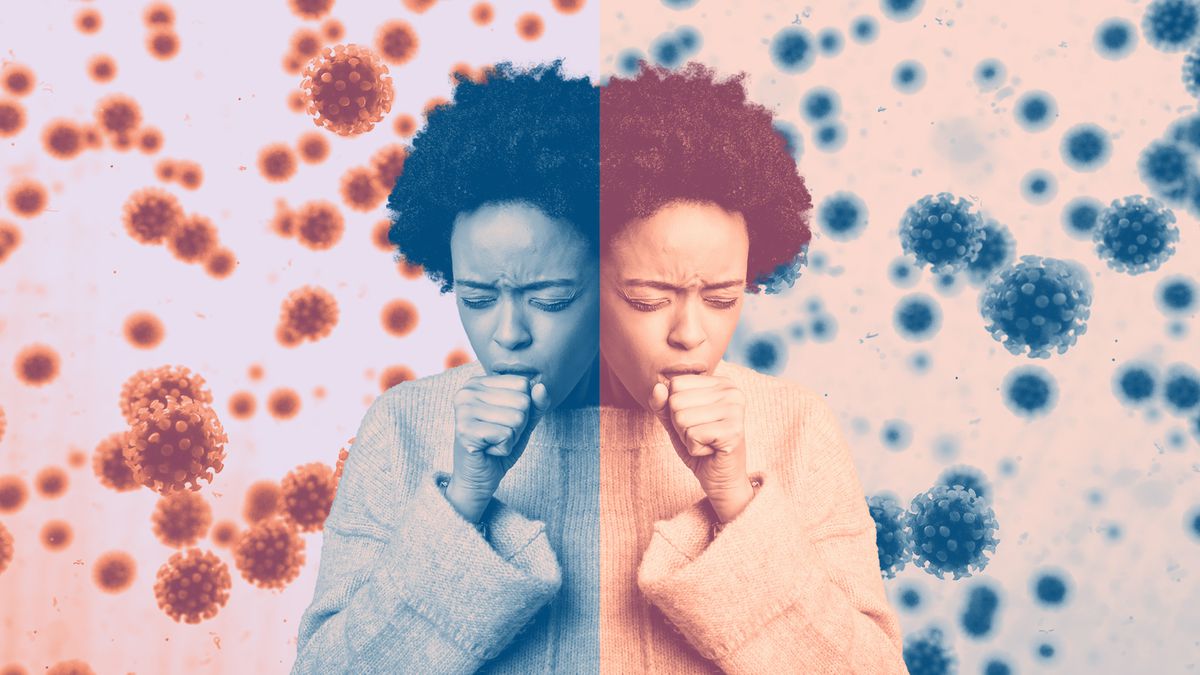COVID-19 rates are increasing in the state, even as more residents are being vaccinated.
The spread of COVID-19 has given us no shortage of public health lingo to work into our daily vocabulary. By now, you probably have at least some understanding of what pandemic, endemic, and epidemic mean. Now, there's a new one to know: syndemic.
It's a term that's being used to describe what's happening in Maine right now. The state is seeing an increase in COVID-19 cases—with rates nearly as high as they were after the holidays—at the same time as more residents are being vaccinated against the virus.
Maine Center for Disease Control and Prevention Director Nirav Shah, MD, said in a press briefing earlier this week that the state may be experiencing a syndemic, which he described as "two parallel occurring epidemics that are unfolding in the same real-time together that may or may not have interconnections with one another."
The state has focused on vaccinating older residents first and now people age 16 and older are eligible to get their shots. "If older Mainers are largely cordoned off, then the fact that they have been vaccinated doesn't help really slow transmission among younger Mainers who are just now getting their vaccination numbers up," Dr. Shah said.
Dr. Shah said that the state has reports of 30 cases of B.1.1.7, the COVID-19 strain that was first discovered in the U.K., along with three cases of B.1.351, the variant first detected in South Africa, and one case of P.1, the variant first detected in Brazil.
"When you couple that sort of syndemic phenomenon with variants that are more contagious, that is my hypothesis right now as to why our case numbers are high and may be even staying high and maybe even going higher," he said.
What is a syndemic, exactly?
Never heard this term before? You're not out of the loop. A syndemic is "more of a term of art" vs. something that public health experts use regularly, infectious disease expert Amesh A. Adalja, MD, senior scholar at the Johns Hopkins Center for Health Security, tells Health.
Still, there is an official definition out there. The Centers for Disease Control and Prevention (CDC) defines a syndemic simply as "synergistically interacting epidemics." Meaning, it's what happens when two epidemics—higher-than-normal levels of an illness in a community—happen at the same time.
One example of a syndemic in medical literature was published in 2019 in The Lancet. The commission report looked at something called "The Global Syndemic," which researchers explained as three pandemics—obesity, undernutrition or malnutrition, and climate change—that affects people worldwide. According to report authors, these three issues "constitute a syndemic, or synergy of epidemics, because they co-occur in time and place, interact with each other to produce complex sequelae, and share common underlying societal drivers."
How is a syndemic different from a pandemic or epidemic?
Quick recap on a few public health terms, because they're going to come up again in a sec:
- A comorbidity means that there is more than one disease or condition present in the same person at the same time, the CDC explains.
- An epidemic is when there is a higher levels of an illness in a community or region than is expected, World Health Organization (WHO) says.
- A pandemic is an epidemic that happens worldwide or over a very wide area and usually impacts a large number of people, per the WHO.
There can be some overlap here, Dr. Adalja says. "You could say that diabetes and COVID-19, or obesity and COVID-19 are syndemic," he says, since obesity is considered an epidemic or pandemic, of course, COVID-19 is a pandemic. "But they can also be comorbidities," meaning they can occur at the same time in the same person.
But there can also be a syndemic of pandemics or epidemics, like the flu and COVID-19. "It's just two parallel disease processes," Dr. Adalja says.
OK, so what's going on in Maine?
Public health experts are still investigating it, and it's hard to know for sure—but there are some theories.
The presence of B.1.1.7 is likely an issue, William Schaffner, MD, an infectious disease specialist and professor at the Vanderbilt University School of Medicine, tells Health. "It's a highly transmissible variant," he says. "It's very contagious and, when you get it, it's more likely to make you ill enough to be admitted to the hospital." And that makes it more likely that people who contract B.1.1.7 will actually get tested for COVID-19 and have their case be officially counted.
B.1.1.7 is also "being transmitted very readily among younger adults," and even circulating among teenagers—who may not be eligible for vaccination or who have not gotten vaccinated yet, Dr. Schaffner says.
Dr. Adalja says this is the "same scenario that we're seeing all over the United States." That is, younger people as a whole are less worried about contracting COVID-19, they're taking more risks and, as a result, they're infected more, he explains.
"The vaccine uptake is higher in older populations and COVID-19 is becoming less of an issue in older people," Dr. Adalja says. "But it's spreading more readily among younger people."
The solution, Dr. Shah said, is to vaccinate 75 to 80% of the population to try to reach herd immunity. "Are we going to get there? That is my goal there is no question about that," he said.
The information in this story is accurate as of press time. However, as the situation surrounding COVID-19 continues to evolve, it's possible that some data have changed since publication. While Health is trying to keep our stories as up-to-date as possible, we also encourage readers to stay informed on news and recommendations for their own communities by using the CDC, WHO, and their local public health department as resources.

कोई टिप्पणी नहीं:
एक टिप्पणी भेजें